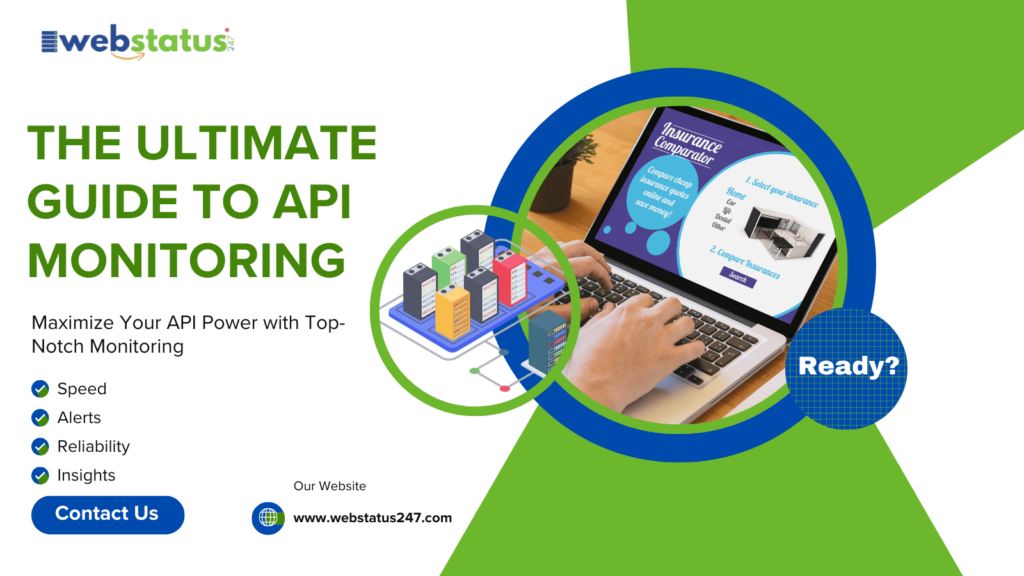APIs (Application Programming Interfaces) have become the backbone of modern digital ecosystems. They enable applications to communicate seamlessly, powering everything from e-commerce platforms to social media networks. As APIs grow more integral to operations, ensuring their performance, reliability, and security through effective monitoring becomes crucial. In 2024, API monitoring is not a luxury but an essential practice for businesses striving to deliver exceptional user experiences and maintain system stability.
What Is API Monitoring?
API monitoring is the meticulous process of observing and analyzing API performance data to ensure functionality, security, and reliability. It involves tracking key metrics like response times, error rates, and request volumes, providing insights into the health and performance of APIs.
Whether you manage a single API or an intricate ecosystem, effective monitoring helps you:
- Identify performance bottlenecks
- Detect and mitigate potential security threats
- Ensure uptime and system reliability
- Optimize user experiences
Key Metrics for API Monitoring
Monitoring success depends on tracking the right metrics. These Key Performance Indicators (KPIs) reveal the true state of your APIs:
1. Response Time
The time it takes for an API to process a request and deliver a response. Fast response times indicate good performance, while delays can frustrate users and indicate underlying issues.
2. Error Rate
The percentage of API calls that fail. High error rates can signal system bugs, incorrect configurations, or even external attacks.
For more info follow us on Facebook
3. Uptime
The total time an API is available and functioning. High uptime is critical for maintaining user trust and operational efficiency.
4. Throughput
The number of API requests processed per second. This metric helps gauge the system’s capacity and scalability.
5. Latency
The delay between a client request and the server’s response. Monitoring latency helps identify network or processing delays.
6. Usage Patterns
Tracking API usage patterns can reveal trends, peak usage times, and potential overloading scenarios.
Tools and Techniques for API Monitoring :
Modern API monitoring involves a combination of basic tools and advanced techniques. Here are some essential approaches:
1. Synthetic Monitoring
Simulated requests are sent to APIs to test their responses under controlled conditions. This technique helps:
- Measure response times
- Detect errors before users encounter them
- Validate endpoint availability
2. Real-Time Monitoring
Real-time monitoring continuously tracks API performance metrics, providing immediate insights and enabling prompt action when anomalies arise.
3. Role-Based Access Management
Integrating role-based access control (RBAC) into API monitoring adds a layer of security. It ensures only authorized users can access sensitive data or configurations.
4. AI-Powered Tools
Artificial Intelligence enhances API monitoring by:
- Predicting potential failures through pattern recognition
- Automating anomaly detection
- Optimizing resource allocation
5. Unified Observability Platforms
Comprehensive platforms integrate API monitoring with other system monitoring tools, providing a holistic view of your IT infrastructure. These platforms:
- Support multiple authentication methods
- Combine metrics from diverse sources
- Offer customizable dashboards
Advanced Strategies for API Monitoring in 2024 :
To stay ahead of the curve, organizations must adopt advanced monitoring strategies:
1. Proactive Alerting Systems
Real-time alerts notify teams of potential issues before they escalate. Modern systems use thresholds and AI to minimize false positives while ensuring critical issues are addressed promptly.
2. Integration with CI/CD Pipelines
API monitoring solutions integrated into Continuous Integration/Continuous Deployment (CI/CD) pipelines help:
- Automate performance testing during development
- Identify and fix issues before deployment
- Ensure consistent quality across iterations
3. Advanced Security Measures
Monitoring tools can integrate with security frameworks to:
- Detect unauthorized access attempts
- Monitor for data breaches
- Enforce compliance with regulations (e.g., GDPR, HIPAA)
4. Geo-Distributed Monitoring
For global applications, monitoring APIs from multiple geographic locations provides insights into regional performance variations and helps optimize global user experiences.
5. Comprehensive Record Management
Maintaining detailed logs of API requests and responses aids in troubleshooting, auditing, and ensuring compliance with data protection laws.
Benefits of Effective API Monitoring :
By implementing robust monitoring practices, organizations can unlock several benefits:
1. Enhanced User Experience
Smooth, fast, and reliable APIs translate to better user satisfaction and retention.
2. Increased Operational Efficiency
Real-time insights and automation reduce manual intervention, saving time and resources.
3. Improved Security
Monitoring helps detect vulnerabilities, prevent unauthorized access, and safeguard sensitive data.
4. Cost Savings
By preventing downtime and optimizing performance, businesses avoid costly disruptions and resource wastage.
5. Scalability
Monitoring provides data to plan for future growth, ensuring APIs can handle increased demand seamlessly.
Final Thoughts :
In 2024, API monitoring is indispensable for businesses leveraging digital technologies. From basic metrics like response time to advanced strategies like AI-driven tools and CI/CD integration, effective monitoring ensures APIs deliver maximum performance, security, and reliability.
Investing in cutting-edge monitoring solutions is not just about staying competitive; it’s about future-proofing your operations. Are you ready to master API monitoring and elevate your digital ecosystem? Start today by implementing these strategies and tools, and watch your APIs reach their full potential.
Key Takeaways :
- API monitoring is essential for ensuring system performance, security, and reliability.
- Track key metrics like response time, error rate, and uptime to assess API health.
- Adopt advanced techniques such as AI tools, proactive alerts, and unified platforms for comprehensive monitoring.
- Integrate monitoring with CI/CD pipelines to streamline development and deployment.
- Prioritize security with role-based access control and real-time threat detection.
By embracing these principles, you can harness the full power of API monitoring and achieve unparalleled operational excellence.
